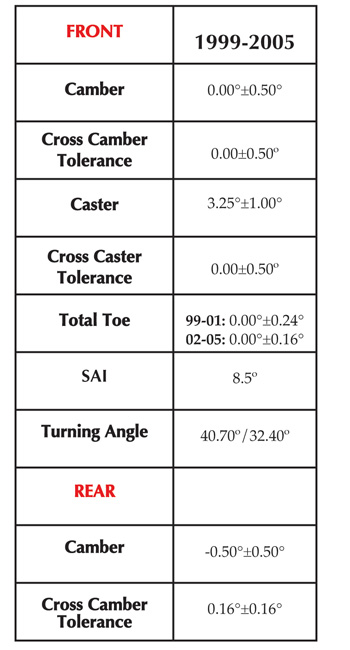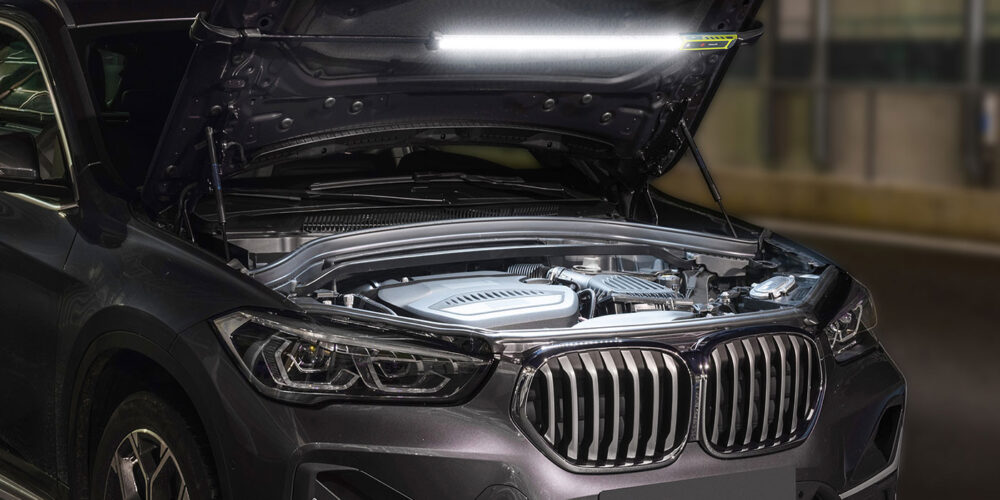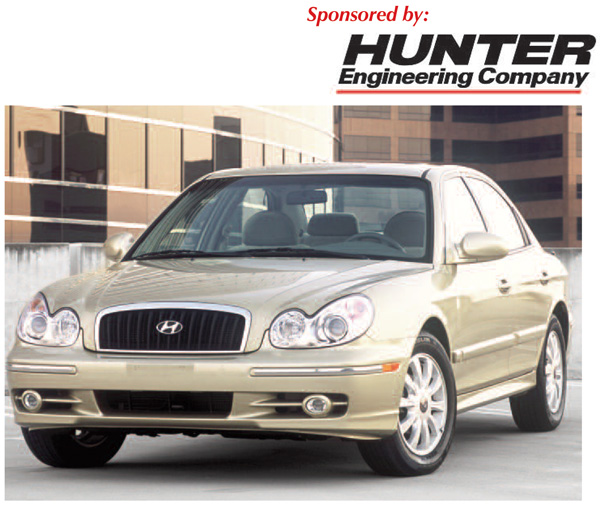 The 1999-2005 Hyundai Sonata and 2001-2005 XG350 models sold more than half a million vehicles during the past decade, so it is a model that can not be ignored. With a large number of these vehicles almost 10 years old, you have to inspect some components with more care before the vehicle is measured for alignment.
The 1999-2005 Hyundai Sonata and 2001-2005 XG350 models sold more than half a million vehicles during the past decade, so it is a model that can not be ignored. With a large number of these vehicles almost 10 years old, you have to inspect some components with more care before the vehicle is measured for alignment.
Sonatas of this vintage have no built-in adjustments for camber or caster. In OEM terms, this vehicle is a “net-build.” When it comes to aligning these vehicles, it is the Hyundai’s mentality that if it is worn, bent or broken, it will be out of alignment and the part should be replaced. But, this does not always work in the real world where springs sag and the vehicle settles, after the warranty period is over. When a vehicle settles the angles will change. It is up to you the technician to evaluate and decide if it needs a part replaced, new springs installed or the installation of adjustable suspension components.
One of the most common failures on the Sonata is the rear springs. Make sure to check for cracked or broken coils at the top or bottom of the spring. If a rear spring is broken or weak, it can cause increased negative camber and the toe to be out of specification. It can also cause front caster problems. Make sure the insulators for the springs are also installed.
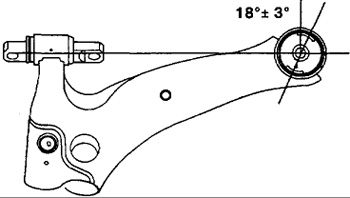 Make sure to inspect the bushings. In the front, the main culprit of caster problems is the lower control arms’ rear bushings. These bushings can wear out or can separate from the bores.
Make sure to inspect the bushings. In the front, the main culprit of caster problems is the lower control arms’ rear bushings. These bushings can wear out or can separate from the bores.
In the rear, the trailing link bushings take a lot of abuse. When these wear out, they can cause toe problems and abnormal rear tire wear on the inside edges.
If you are replacing any bushings, make sure you follow the service information on how to align the bushings in the housings. Most of the bushings on the Sonata have voids designed to reduce vibration and harshness.
Sub-Frame Recall
In 2009, Hyundai recalled 175,765 2001-2004 Sonatas for corrosion of the front sub-frame. The vehicles were registered in the states of Connecticut, Delaware, Illinois, Indiana, Iowa, Maine, Maryland, Massachusetts, Michigan, Minnesota, Missouri, New Hampshire, New Jersey, New York, Ohio, Pennsylvania, Rhode Island, Vermont, West Virginia, Wisconsin, and The District of Columbia.
The investigation leading up to the recall found that in “salt-belt” states where salt and liquid de-icers are used on the roads, the mixture was accumulating in the sub-frame that supports the front suspension.
This was causing internal corrosion that can be progressive and results in thinning or perforation of the sub-frame steel from the inside.
The corrosion is frequently visible and often discovered during inspection, routine maintenance or during an alignment.
If a customer is reporting a steering pull, it could be a problem with the sub-frame. Take time to inspect the sub-frame and the cross caster angles. One technician reported that the corrosion and failure is more likely to be present in the passenger side of the sub-frame.
The corrosion, if unchecked, will progress and the forward mounting of the lower control arm may detach from the sub-frame. If that happens, the front wheel may make contact with the fender or wheel well.
As part of the recall, dealers were supposed to measure the thickness of the front sub-frame and inspect the front sub-frame for corrosion damage. If the subframe is too thin, the front sub-frame will be replaced with a new sub-frame that incorporates additional holes in the upper and lower panels.
If the front sub-frame does not require replacement, the dealer added drainage holes to the sub-frame and will treat the sub-frame with rust-proofing material to arrest the corrosion process.
If you see a vehicle that has not had this recall performed, send them to the dealer before attempting the alignment.
Front Adjustments
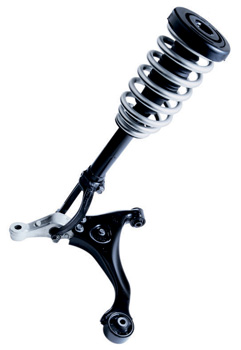 Front toe is adjustable. Toe-in adjustment should be made by turning the right and left tie rods in the some amount.
Front toe is adjustable. Toe-in adjustment should be made by turning the right and left tie rods in the some amount.
When adjusting toe-in, loosen the outer bellows clip to prevent twisting. After the adjustment, firmly tighten the tie rod end look nuts and reinstall the bellows clip.
Caster and camber is preset at the factory and can not be adjusted. If caster is not within standard value, Hyundai recommends replacing bent or damaged parts. But, this repair strategy may not work on vehicles with normal wear and spring sag. Aftermarket adjustment kits are available, (see sidebar).
Upper and lower ball joints should have zero play. Wear measurements are performed with the joint disconnected from the knuckle or lower control arm with a torque wrench to measure drag.
Rear Adjustments
To adjust the rear toe angle, there are cam bolts on the inboard side of the toe links. The toe link mounted cam bolt should be turned an equal amounts on both sides when adjusting.
Camber is preset at the factory and cannot be adjusted. If camber is not within the specifications, inspect the suspension and replace bent or damaged parts.
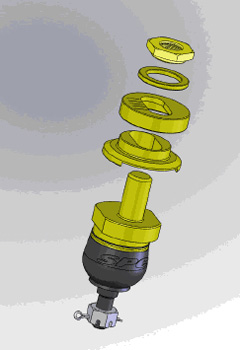 Aftermarket Adjustment
Aftermarket Adjustment
The 1999-2005 Sonata has no front camber or caster adjustment from the factory. Specialty Products Company engineered part number #67190, an adjustable sliding ball joint. This ball joint is designed to adjust camber by ±1.5º.
Installation of this ball joint can be completed without removing the control arm by using a small ball joint press or our #40920 which is specifically designed to remove this style of ball joint.
Once the ball joint is installed following the instructions, the camber can be adjusted by loosening the top nut and sliding the ball joint to achieve the desired camber change. This alignment process can be easily done by using a feature that has been available on alignment equipment for a number of years.
It is called the ‘jack and hold’ or ‘jack up selected axle’ option. After selecting this on your equipment, the aligner will let you jack up the axle. For this adjustable ball joint, the vehicle should be lifted up just enough so the tires are still on the turn-plates, but all the side pressure has been relieved on the upper control arm.
After selecting ‘continue’ on the screen, live camber can now be adjusted. After adjustment is completed, torque the top nut to 120-ft/lbs. and follow the equipment instructions for lowering the selected axle. Check and adjust toe as needed.
Douglas Hardy
Technical Trainer/Designer
Specialty Products Company
www.specprod.com

